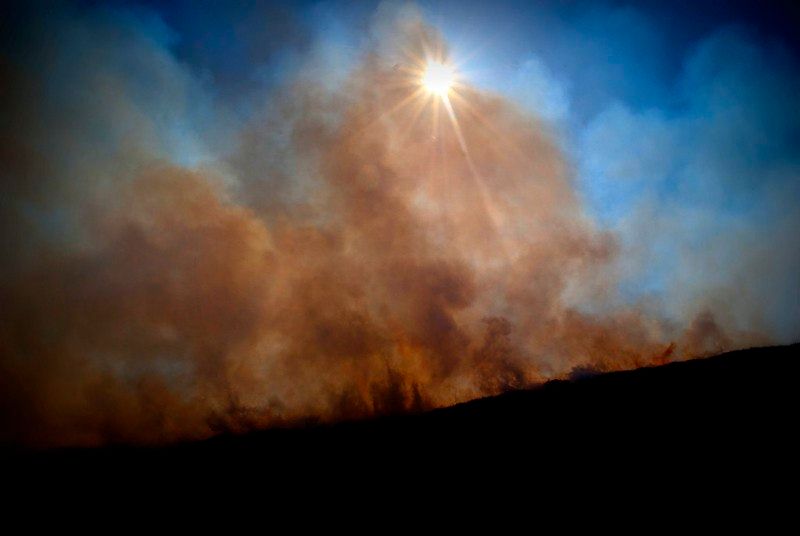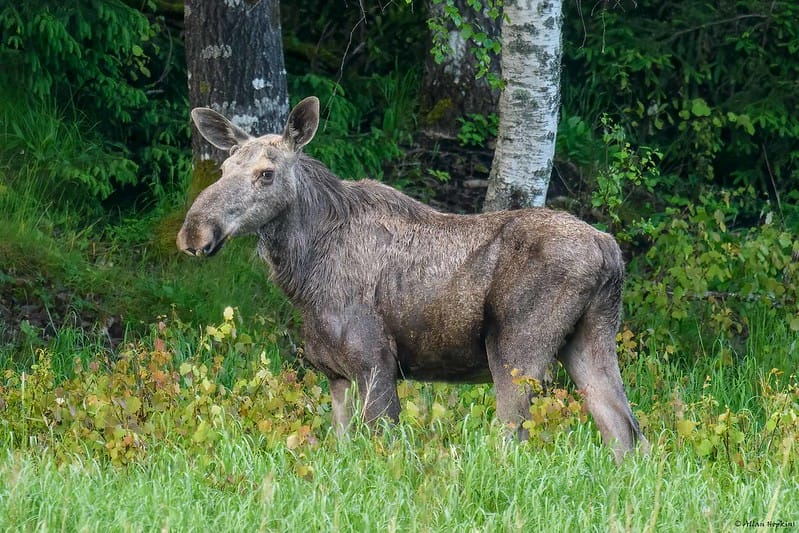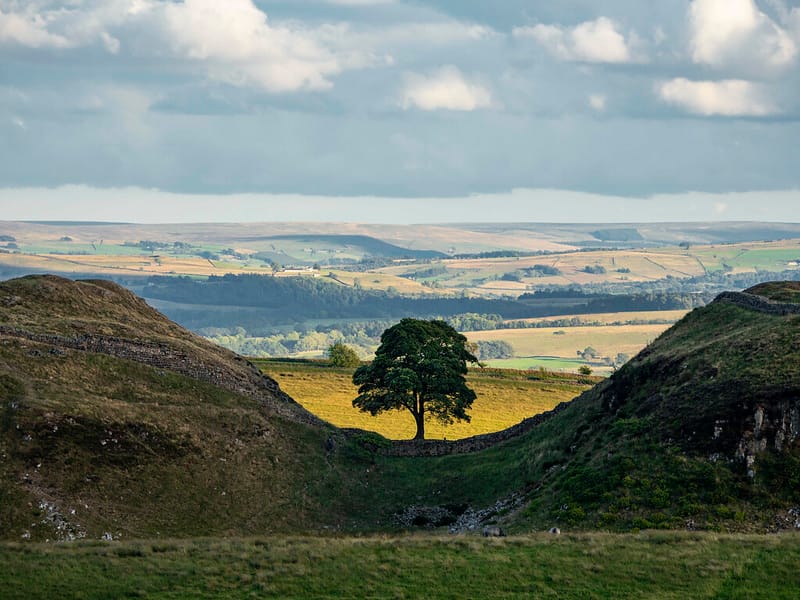
Peat Burning & Dasgupta Review
The latest news on nature and conservation in the UK.
National news
Peat | The government has announced that it will bring forward legislation to ban heather burning on protected blanket bog habitats. The idea is to protect peatlands, which are damaged through the rotational burns commonly used to create fresh shoots for red grouse, although the regulations will still allow burning in some circumstances. The news was widely covered, with articles in the Times, the Daily Mail, the Guardian and the Independent. Campaigners have been calling for this for a long time, and “any progress on this issue is, of course, to be welcomed,” according to the RSPB’s Martin Harper. Still, he and others were quick to point out that the announcement fell short of expectations, with particular concern around the exclusion of shallow peat and non-protected land. “With 13% of the world’s blanket bog here in the UK, every acre is internationally significant,” said Richard Benwell of Wildlife and Countryside Link. Craig Bennett of the Wildlife Trusts added that it would be “extremely embarrassing” if the UK is still burning its peatlands when COP26 meets at the end of this year. Conservationist Mark Avery has more detailed analysis, and Rewilding Britain’s Guy Shrubsole has done some clever analysis with maps.
Marine | The Marine Management Organisation has launched a consultation on proposals to further protect four offshore Marine Protected Areas, including Dogger Bank, The Canyons, and areas off Dorset and North Norfolk. The new rules would ban bottom trawling and, in some particularly sensitive locations, the use of static gear. The news was covered by the Guardian, the Times and the Telegraph. While the National Federation of Fishermen's Organisations said that the move would be a “sledgehammer” to the industry, academics and conservationists welcomed the move: “New protection could lead to the beginnings of a recovery of a megafauna that used to thrive on the bank in astonishing densities,” Callum Roberts of Exeter University told the BBC. Nonetheless, campaigners also noted that there was a long way to go in regulating these “paper parks”. Chris Thorne of Greenpeace UK noted that “action in these four sites is only the tip of the iceberg in terms of the scale needed to solve the crisis facing our oceans."
Agriculture | Strict new controls over agricultural pollution in Wales have caused something of a crisis for farmers and government ministers. Specifically, the whole of Wales is to transition to a “nitrate vulnerable zone” from 1 April, instead of implementing the voluntary approach for improving water quality advocated by farming unions, reports Farmers Weekly. Montgomery MP Russell George said that it was a “kick in the teeth” for Welsh farming, reports the Shropshire Star, while Plaid Cymru said that it represented the “final breakdown” in relations between farmers and the government, reports the BBC. Over the border, there are concerns that the crackdown could lead to slurry being dumped in Shropshire. But first minister Mark Drakeford said that enough was enough: “The level of pollution incidents in the agriculture sphere are damaging the reputation of farmers, they are damaging our environment, and they are damaging the ability of that industry in the longer run to trade with other parts of the world.”
In other news:
- The PM’s dad, Stanley Johnson, has advocated a return to traditional methods of farming to tackle climate change, reports the Telegraph.
- The UK’s population of cranes has now exceeded 200, reports Countryfile.
- Rewilder Derek Gow, with financial backing from Ben Goldsmith, is breeding tree frogs with the intention of returning them to the wild, reports the Telegraph.
- The genetic line of the rare Vaynol cattle has been preserved after a calf was born through an embryo transfer, reports Farming UK.
- A new project is investigating whether sea cucumbers could be used to clean up marine pollution, reports the Scotsman.
Across the country
Norfolk | Two rows of poplar trees will be removed from the Holkham nature reserve in Norfolk, which is managed by conservationist Jake Fiennes. The non-native species have grown so high that their canopies no longer provide shelter, reports the Eastern Daily Press. Instead, a mix of native trees and shrubs will be planted, creating a wildlife corridor alongside the road. The poplars themselves will be turned into woodchips and used to heat Holkham Hall and the surrounding buildings.
Lancaster | Investigations are underway to assess whether a patch of woodland should be considered ancient, following proposals to develop a static caravan site to the north. Planning permission was granted last year, with earthworks undertaken on the meadow, but that permission was subsequently rescinded, reports the Lancashire Post. “Should the council be minded to refuse consent, then the applicant should be required to reinstate and restore this area of this site to a species-rich meadow,” according to the Forest of Bowland AONB.
North East | A bid has been launched to plant 500 hectares of new ‘community forest’ across the North East, reports the Chronicle. The local authorities are working jointly on a proposal to the government, which it is hoped will be completed this month, with planting starting later this year – although several councils still have funding concerns, which are still being addressed.
Elsewhere:
- Nearly 3,000 badgers were killed in Derbyshire last year as part of the government’s cull, reports the Derby Telegraph.
- The Peak District’s last mountain hares are at risk, according to an article in the BBC, written by the appropriately named Simon Hare.
- Illegal bird traps have been discovered in woods in Gloucestershire, reports BirdGuides.
- Thatchers, the cider company, is giving away 100 apple trees to create ten community orchards, reports the Bristol Post.
- The rare field wormwood plant has been found on an industrial estate nature reserve in Suffolk, reports the BBC.
- A major clean-up operation is underway in Llangennech after a train derailed last August, reports the BBC.
Reports
Economics | There was only one report that anyone was talking about this week, and it was the Dasgupta Review. Commissioned by the Treasury while Sajid Javid was at the helm, it looks at the challenges facing the natural world from an economic perspective, with humans framed as the “asset managers” undertaking an exercise in “portfolio management” – more on the discussion prompted by that framing below. The review itself is extremely long; it’s here if you want to get your teeth into it. Otherwise, you can read the government’s abridged version or headline messages. The University of Cambridge (where Professor Partha Dasgupta is a fellow) and the Guardian also have produced useful summaries.
Government | Parliament’s Public Accounts Committee, which is made up of MPs, has released a report on the government’s efforts to meet its long-term environmental goals. It’s not flattering. Nine years on from setting its ambition to improve the natural environment within a generation, the government does not yet have the right framework for success, the report says, while progress on issues like wildlife loss and water quality has been “painfully slow”. The BBC covered the news.
Drought | Over the next 20 years, Scotland is likely to face an increase in the risk of extreme droughts due to climate change, according to new research by NatureScot. Extreme drought events could increase from an average of once every 20 years to once every three years, according to the research, with areas in the Borders, Aberdeenshire, Caithness, Orkney and Shetland likely to be the worst affected. This will have a knock-on effect on sectors like agriculture, forestry and whisky production.
Science
Nature | This week brought a timely and important paper about the way we talk about nature-based solutions. It suggests a number of guidelines: that they are not seen as a replacement for phasing out fossil fuels, they are not limited to forests, they are implemented with the engagement and consent of Indigenous and local communities, and they should be designed to provide measurable benefits to biodiversity.
Fish | Commercial fish species in Scottish waters are growing faster but reaching a smaller size overall as sea temperatures rise, according to research by academics at the University of Aberdeen. “Importantly, we observed this pattern in both the North Sea, which has warmed rapidly, and the west of Scotland, which has only experienced moderate warming,” commented the lead author, Idongesit Ikpewe, in a blog post about the study published this week by the British Ecological Society. “These findings suggest that even a moderate rise in sea temperature may have an impact on commercial fish species’ body sizes.”
Crops | It’s not exactly a scientific paper, but the Centre for Ecology & Hydrology has released the latest results from its satellite monitoring of the UK’s crop land cover, and this blog delves into what the results show. The maps showing patterns on crop rotation are particularly interesting, given the impact that this farming technique has on biodiversity and habitats.
Driftwood
Dasgupta | The Dasgupta Review generated a lot of comment and response, much of it debating whether it was sensible to attempt to protect nature by giving it financial value: indeed, the Guardian has a letters page devoted to the topic. The triumvirate of leaders at Defra, the Environment Agency and Natural England released some approving statements; Tony Juniper said that “the restoration of the natural world will bring a range of valuable dividends”. Beccy Speight, chief executive of the RSPB, said that the release of the report was “an incredibly important moment that should trigger a sea-change in attitude towards the positive role nature plays underpinning our prosperity.” Not everyone agreed: George Monbiot accused Dasgupta of promoting “a kind of totalitarian capitalism” that “disguises the political economy of destruction”. The Wildlife Trusts has published a blog on what needs to happen next.

Conservatives | Sam Hall, director of the Conservative Environment Network, has written a lengthy essay on his vision for environmental action this year, and lays out a Conservative blueprint for nature recovery. It’s worth a read, whether or not you agree with him that Conservatives have a crucial role to play because of “their belief in intergenerational equity and their preference for market-based solutions”. It includes a straight-out challenge to the left, who “like to claim that only a massive expansion in state spending and ownership of the economy can solve climate change,” he writes. “2021 must be the year when conservative environmentalists prove them wrong.”
Land | NatureScot has published a blog post by its chief executive, Francesca Osowska, about the need to transform how we manage land to meet both the nature and climate emergencies. There are significant challenges, she says, “for forestry, in terms of the time it takes for new woodlands to mature into carbon sinks; for agriculture in how we manage our soils and livestock, to a more comprehensive review of our food system, what we eat and how it is produced and distributed.”
Further reading:
- Buglife has responded to the news that the government has accepted an application for the London Resort on Swanscombe Marshes.
- The BBC investigates whether the pandemic could kill off HS2.
- If you enjoyed the scientific paper about ponds I included in Inkcap two weeks ago, you’ll enjoy this interview with its author in the Applied Ecologist blog.
- The Guardian has a feature on the wondrousness of hedgerows when it comes to tackling climate change and biodiversity loss.
Happy days
Forests | Want to take a cinematic journey through England's forests? Here’s a blog by Forestry England looking at where various movies and TV shows were filmed. It includes Harry Potter and the Deathly Hallows (Forest of Dean), Killing Eve (Wendover Woods) and Robin Hood (New Forest). It points out that Bourne Wood in Surrey has been the site of many a movie since it was first used in Gladiator.
Image credits: Snipps Whispers, Micheile Henderson
Subscribe to our newsletter
Members receive our premium weekly digest of nature news from across Britain.
Comments
Sign in or become a Inkcap Journal member to join the conversation.
Just enter your email below to get a log in link.








